Dance Films Case Study
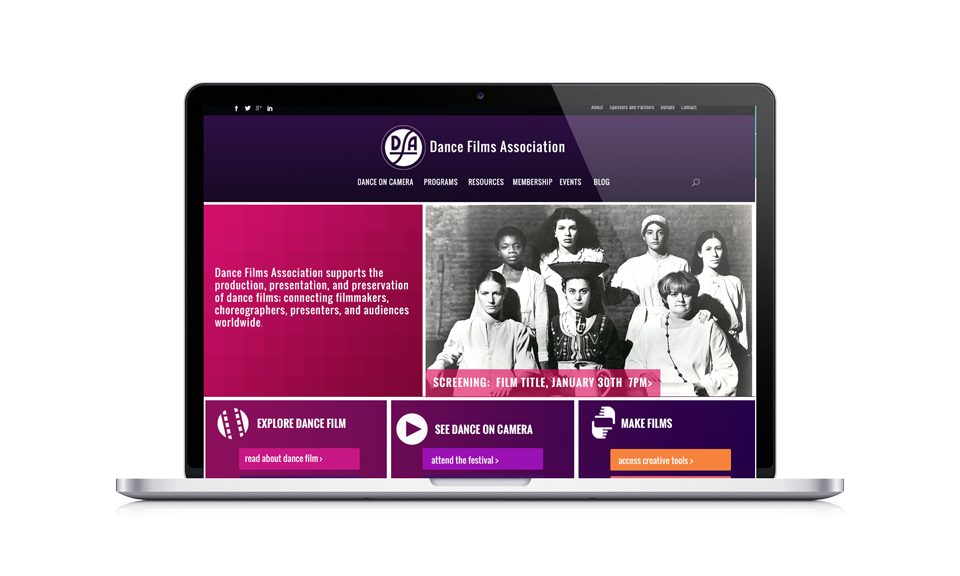
Background
A non profit membership organization, Dance Films Association has a legacy of over 46 years establishing and nurturing the genre of dance films. DFA builds upon founder Susan Braun’s vision by encouraging choreographers to enter the world of filmmaking, for filmmakers to discover the rich history of dance, and for audiences to engage with the broad spectrum of these films. Today, DFA serves the global dance film community by providing membership opportunities, connecting artists and organizations, fostering new works for new audiences, and sharing essential resources.
Our Process
When embarking on the design of a new online presence for Dance Films Association we formed a community user-centered, creative and open process to cultivate engagement through co-creation. As partners for several years we entered the project with DFA with a unique position to understand all the elements of the custom design for community, creative and technical needs. Throughout the design process, we created points to foster dialogue, collaboration and co-creation among the member of DFA, dance and film professionals invested in the future of the Dance Films Association.
Building a website that is both user-friendly and beautiful needs to integrate many perspectives, disciplines and mindsets. Arrow Root Media’s Brielle Maxwell lead the process in strategic design and Roslyn Lavery implemented custom layouts. Our collaborator, Tara O’Con brought her knowledge of creating rewarding user experiences. Dance Films Association, carried an important mindset in opening up to the strategic process, a process that includes exploration, challenging assumption, tinkering and a dedication to continued innovation and improvement.
Our custom design phases include:
Discovery
User centered strategy
Visual design
Development
QA
Launch
Post Launch Support
Discovery Phase
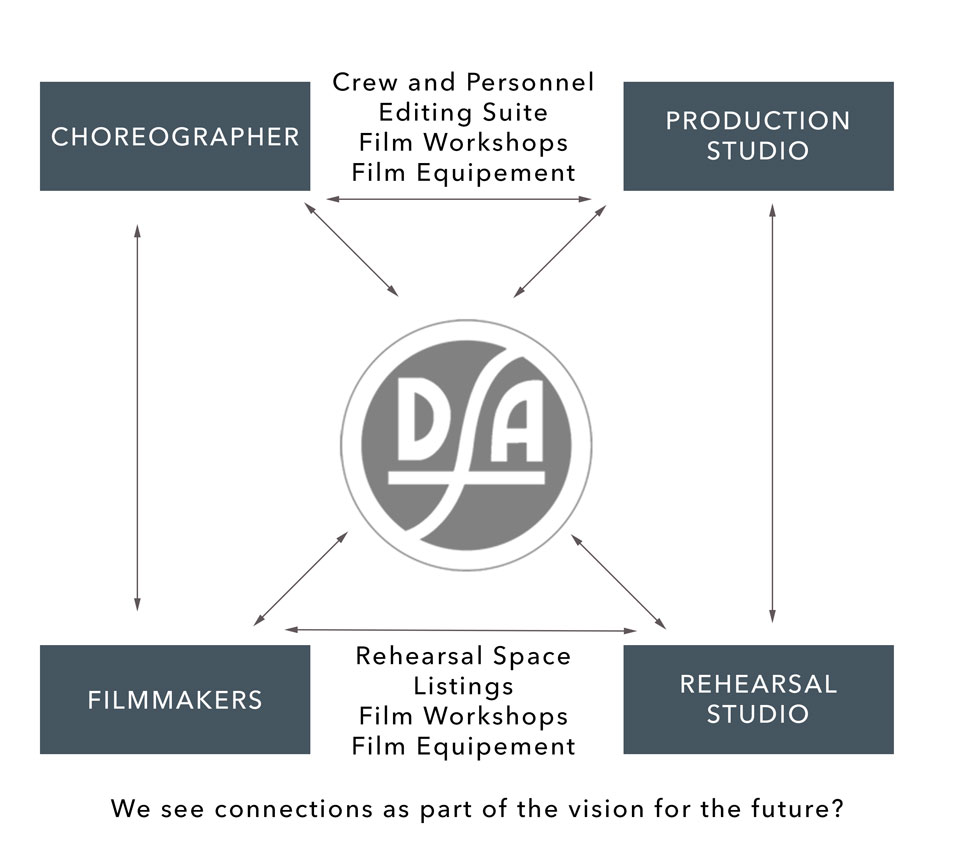
What’s at the heart of Dance Films Association?
DFA needed to understand the landscape of their community and redefine their role in it. The assumption for many in their community was the Dance Films Association was equivalent to their main production the Dance on Camera film festival. DFA has grown the number of support services and program offerings over the years. DFA’s vision and leadership team continue to view the organization as connector and a leader in the future of Dance Films genre. while it’s historic legacy in defining the dance films genre through Dance on Camera . Expansion of the brand beyond Dance on Camera required clear communication and a separation of their programs and services.
Discovery Outcomes
A world without Dance Films Association means a world without the dance films genre. Discovery phase involved doing several facilitated brainstorms with the DFA team, and a community survey to gain insights from the community. Our stand out finding was that Dance Film Association is viewed as a core to genre. We looked for supporting findings, by asking ourselves what is at the heart of DFA? DFA is a membership organization first and their vision of creating a dance film archive speaks to the legacy DFA has created. We view membership and archive elements as integral in communication of organization’s identity. When building the structure of the website they become the scaffolding of organization’s support structure.
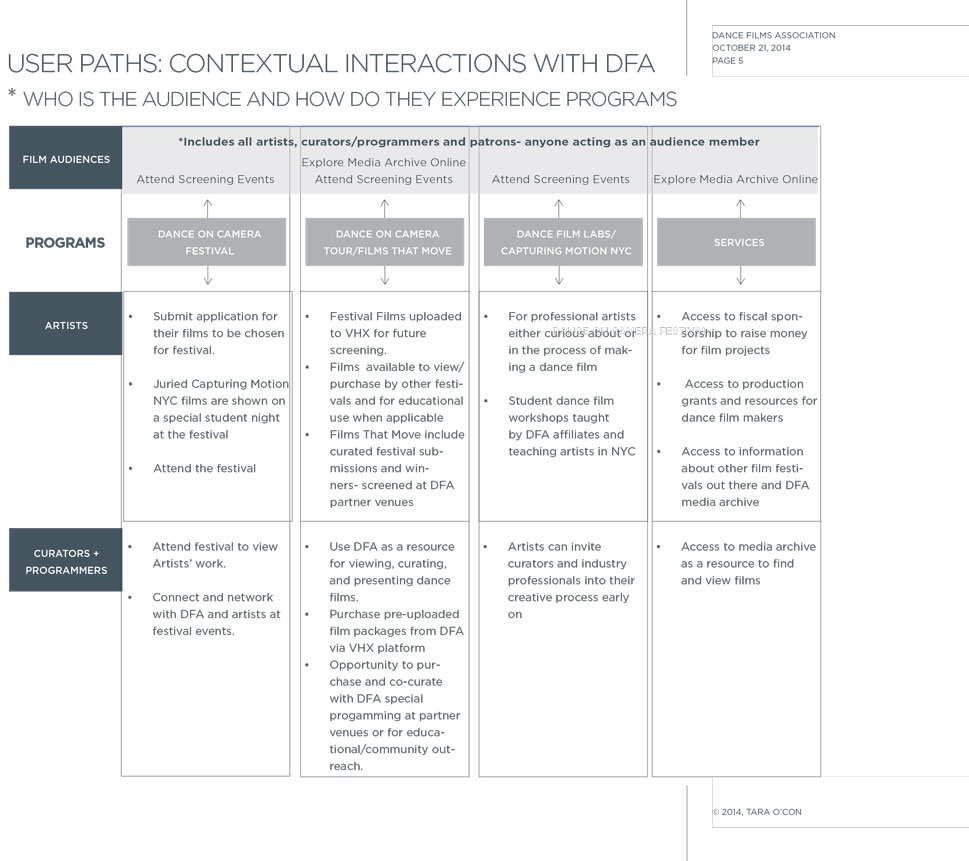
Community Centered Strategy
Filmmakers, dancers, choreographers, dance enthusiasts each set of their community have different needs and goals on the DFA website. Each group has it’s own interests and desired level of engagement. To get an outside perspective we brought on Tara O’Con, achoreographer and UX designer. Tara helped us understand the types of users we encounter, particularly the User Paths and Target Audience.
We identified personas and reduced their needs into three main goals, Making Dance Films (Artists need help doing this) Supporting Finished Films (Artists need earlier resources to get to this point) Curators/Programmers want to see finished films for their programs. To foster this engagement we created 3 distinct destinations on the homepage, easily accessible by the specific calls to action. We organized three primary user paths based on this finding. From there we began to setup the sitemap to structure the content based on the user paths. DFA needed to the separation of and clarification between Programs and Services.
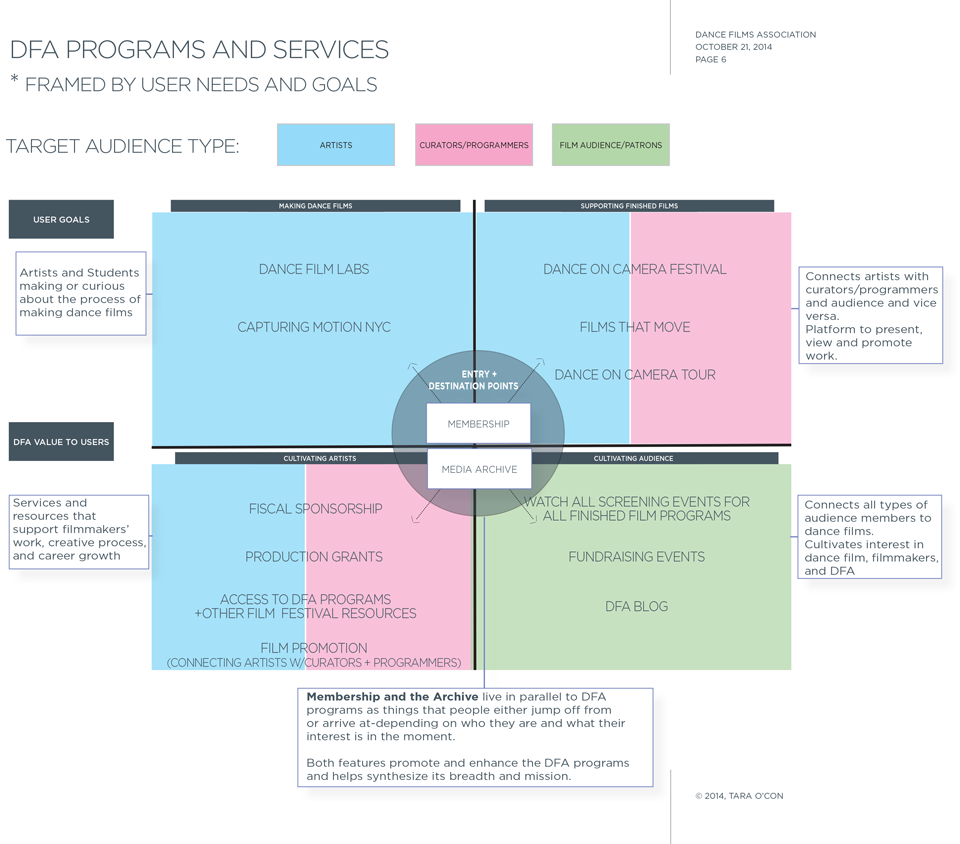
Dance Films Case Study
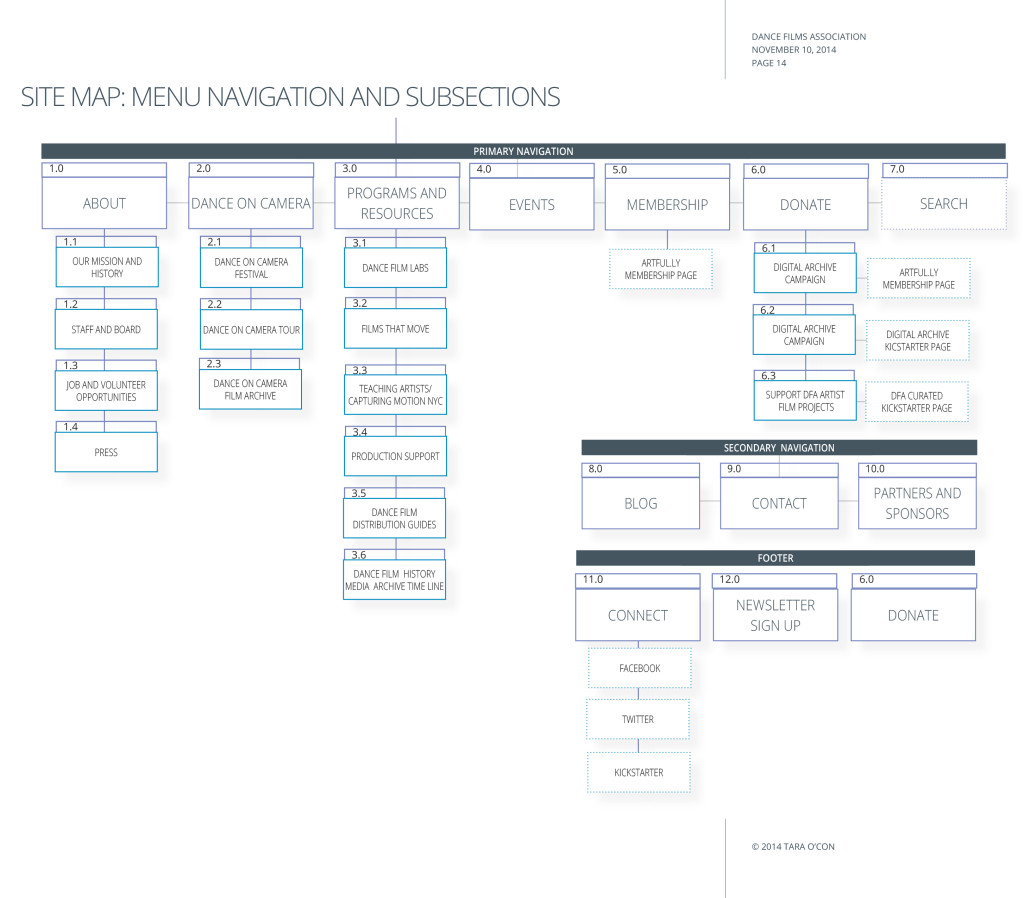
Prototyping and Wireframing
Bring Ideas to Life: Sketch to Wireframes
To bring the prototype to life we started wireframes. Wireframes are a great communication tool to translate the finding into layouts. At this point we could ask “what if” questions to the team quickly and easily. We began using wireframing both by using low-fi sketches to outline the structures and high-fi wireframe created in omnigraffle to inspire the visual design.
The team gravitated to creating one long page for each destination page explore, watch and resources. We designed modular sections and call to action we aim to bring the community focus the community on their user path. Referencing the core see the intersection of the paths as a place to build the level of engagement as their interest with Dance Films grows. For example, an interested attendee of a screening from the programs page can learn about the benefits of becoming a member.
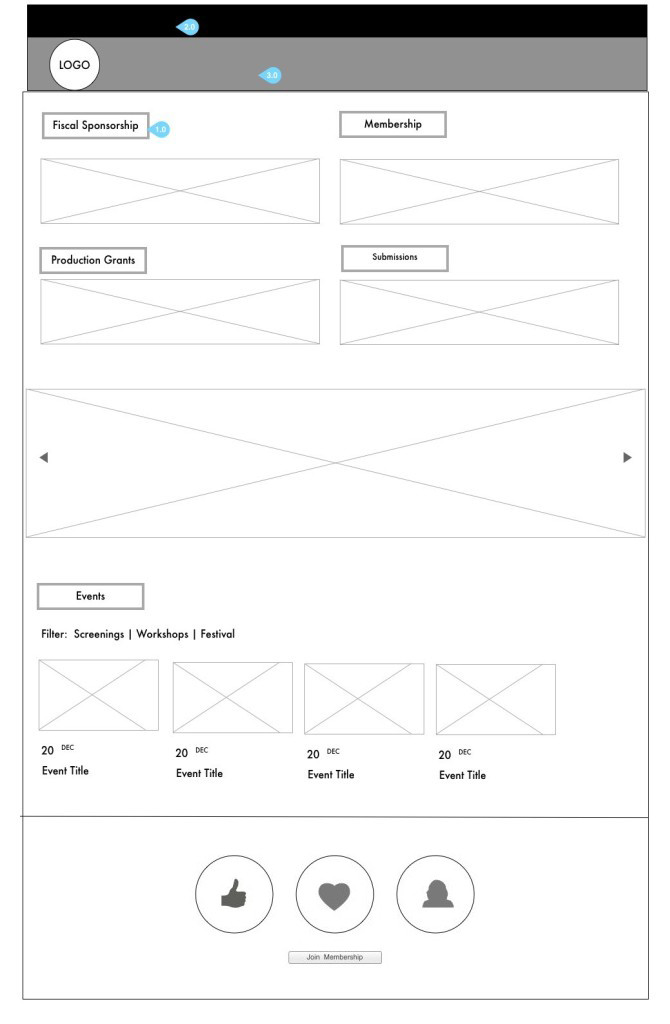
Prototyping Results
Build Phase
At this point we needed to define the set of features most important to put in the initial launch of the website. From all of the features we created to match users needs we needed to determine the technical requirement. Did they custom templates? Did DFA have design assets to support it or did we need to create them and what were the custom features.
In order to lay this out we used a features and function matrix. This gave us format to understand the most in demand features. From there we added another layer of planning to determine whether they were custom features or requirements of a existing theme.

It’s all about films!
From a technical perspective, the film post type becomes the core of its feature. Filmmakers can easily create the post type from the front end and enter their information in the weeks leading up to the festival. Arrow Root Media established this post type in previous years with the long term vision that films can be the main core of the website. Fiscal sponsorship projects can be based on the film
Launch for Dance on Camera 2015
Making the website come to life before the 2015 was not only part of the vision but priority so we could gain insights at the Festival. We began to roll out design and development together so we would could begin to interact with the site. While the mockups were translated to the WordPress theme many details were iterated on the development site. Including colorizing the spectrum that distinguished Dance on Camera, Resources, and Programs.

Results
The success with the site redesign of Dance Films Association’s (DFA) website demonstrates the high return-on-investment of user experience and website design.
DFA’s unique selling proposition was their annual film festival, which is the longest-running film festival in the world whose sole focus is on dance and choreography. By marrying creative and strategic goals in our process, we illustrated that a website can be a foundation that allows an organization to move past straight-forward communication goals into the realm of securing a legacy. DFA was able to realize their goal of communicating the value of its programs and services, which in turn allowed the organization to pursue a highly desired film archival project.
Special thank you to the project team: Brielle Maxwell UX/UI Design Lead, Tara O’Con UX Designer, and Roslyn Lavery, Lead Developer.
